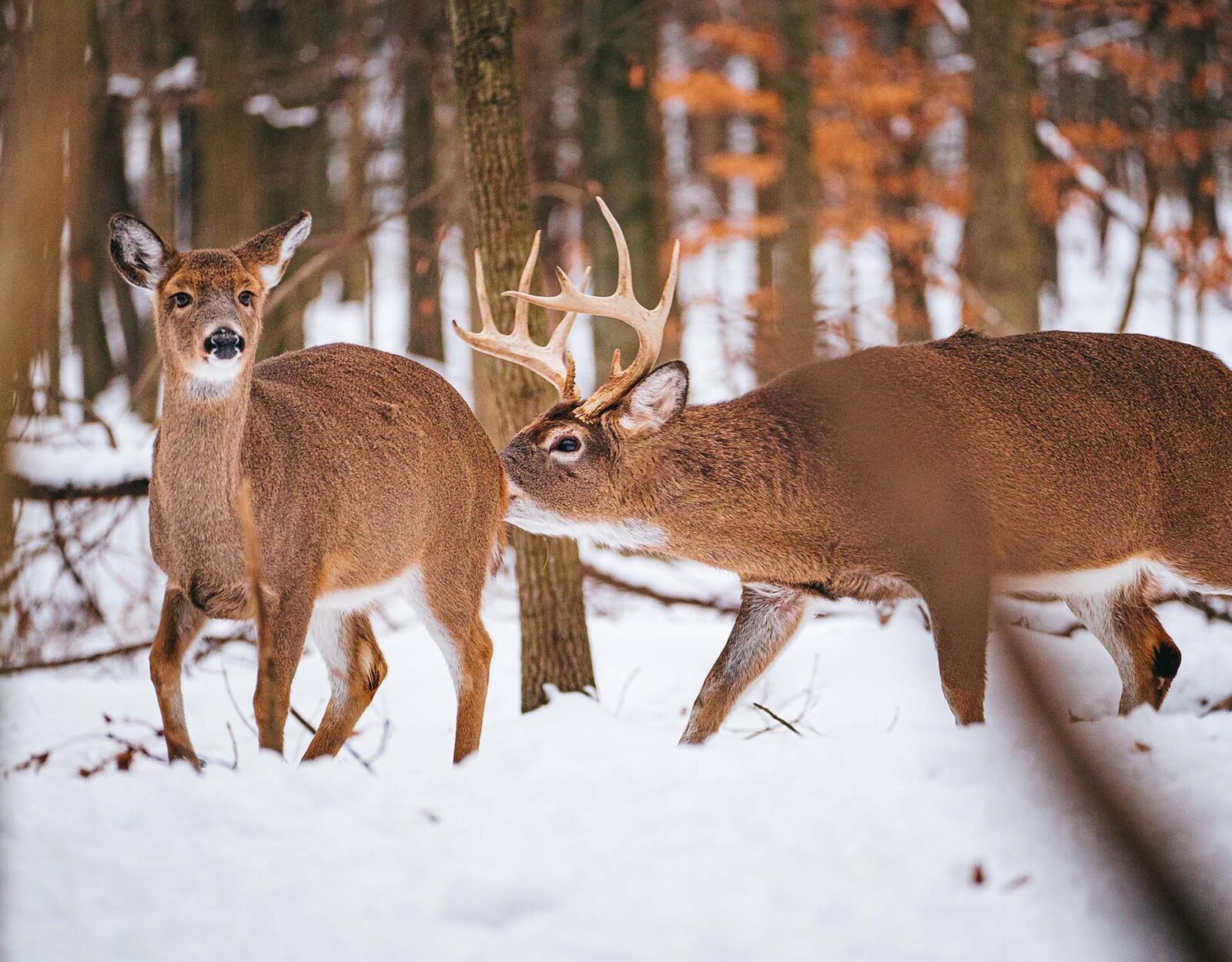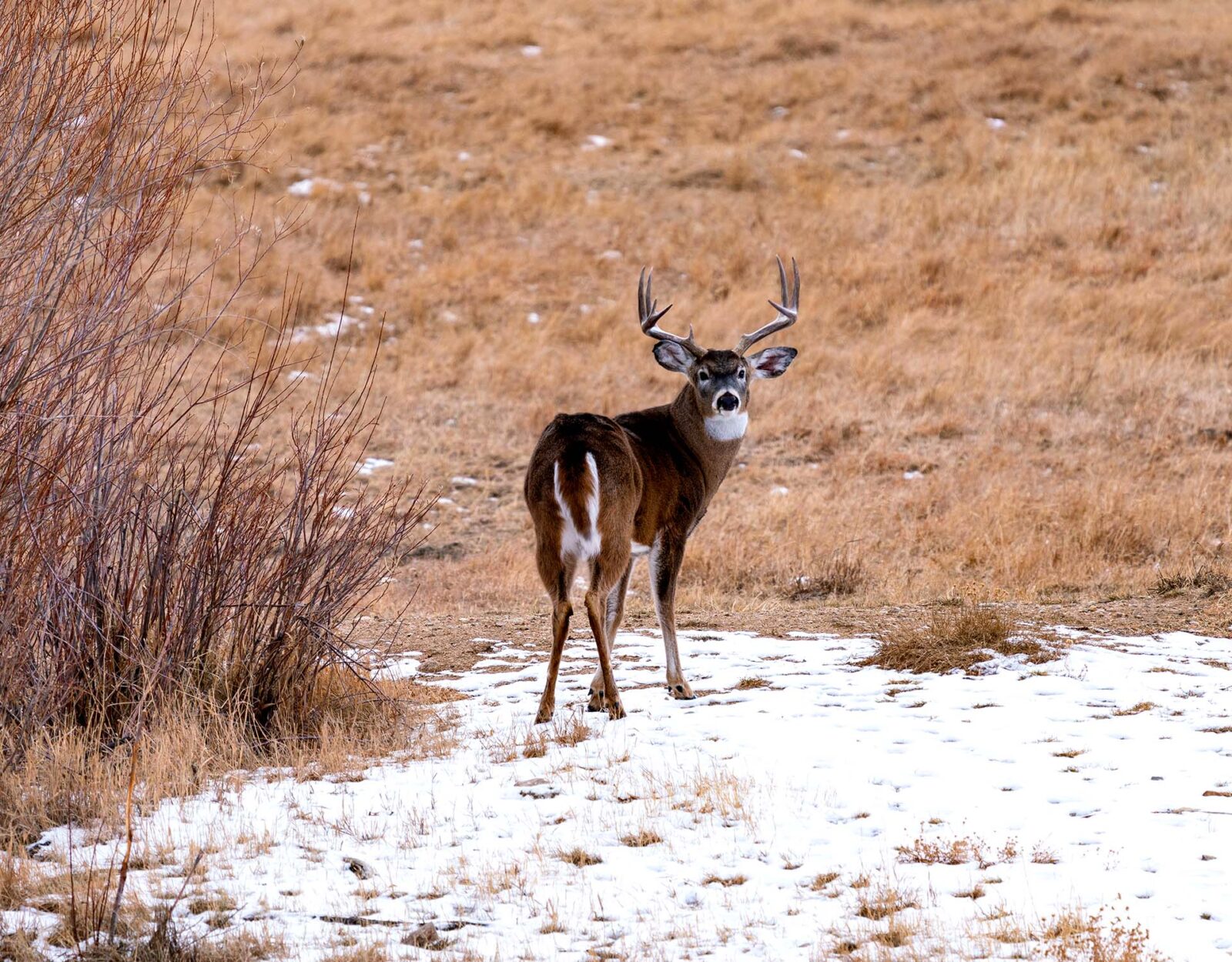See the 2024 Rut Predictions so you are prepared for your hunting season.
The temps are cool, the leaves are crunchier than ever, and love is in the air. With bucks separating from their summer bachelor groups, their urge to breed grows and the search for does begins. This annual shift in behavior is the start of the deer rut, when bucks turn their focus from feeding to breeding. Lust-crazed bucks can be observed chasing does, marking territory, and fighting other bucks. And, almost in unison with this rut biology, hunters are taking vacation days like they’re going out of style. The term “rutcation” is alive and well for good reason. The rut is the greatest time for hunters to be in the field.
Hunting the Deer Rut
During the rut, bucks drop their guard and are more apt to show themselves during daylight. As their instinct to breed takes over, bucks will search miles and miles for does in heat. This makes them a more mobile animal overall. Big bucks, ones that you never saw beforehand, will come out of the woodwork too. This is one of the best things about hunting during the deer rut; the behavior of bucks makes them much more visible, resulting in a higher likelihood of you catching them on their feet. The window for potential success is much larger given this increase in movement.
On that note, when the rut kicks in, the traditional routine of hunting in the morning and evening flies out the window. Don’t get me wrong, those times are still good, but the rut changes things. With all of this movement, bucks can be spotted literally at any time of the day. This means more time in the tree is time well spent. It also means that new bucks can pop up out of nowhere without warning. You put yourself in between two doe bedding areas and see what happens. Bucks will act like pinballs between the two and any passers-by will follow suit. You just never know what you’re going to see during the rut and that’s one of the most exciting things about it.
Aggression is something that runs thick during the deer rut and is another plus for hunters in the field. Whether we’re talking bucks becoming incredibly territorial and fighting one another, or how they seem to tirelessly chase does in the name of breeding, it happens in full force. This behavior opens up even more avenues for success. Things like rattling, calling, and the use of decoys can all be used effectively during the rut. Motivated bucks will come running to the sounds of antlers crashing together because bucks are often fighting over breeding rights on does. Grunting can attract bucks passing by, while decoys can either mimic does or bucks bringing a curious buck into range for further investigation.
Lastly, bucks aren’t just less on edge, they’re frequently completely oblivious to their surroundings. A time when this is especially true is when a hot doe is in front of him. Sometimes bucks will stand motionless in the same spot just staring at a doe. What I’m getting at here is while the buck’s full attention is on the ladies, it puts very little attention on you. It decreases your room for error and makes the buck much more huntable.
Hunting the Phases of the Deer Rut

The deer rut lasts about a month long and happens in phases. These phases of the deer rut kick off with the pre-rut when younger bucks start cruising and mature bucks begin moving in daylight. From there, the first does will start to come into estrus, and bucks will start showing up at the doe feeding areas. Following that is what we deem the “rut fest.” Bucks run rampant and this is the absolute best time to see a mature buck. After rut fest, there is a bit of a drop off with intensity leaving many deer tied to thick bedding areas. Lastly, the rut will say its goodbyes with the last wave of estrus does. The bucks will still be out searching for them during this last call. Big bucks will often try and scent check doe bedding areas, trying to scrounge up the last remaining breeding opportunities.
Deer Rut Phases and Dates
- Pre-Rut (Oct 24-30)
- Love is in the Air (Oct 31-Nov 5)
- Rut Fest (Nov 6-12)
- Persistence Pays (Nov 13-18)
- Last Call (Nov 19-24)
Rutting Season

The dates listed above are very general. Rutting dates are not a cookie-cutter thing in the least and they change by region. Weather, climate, and geographic location all affect when exactly the rut will start/end.
For instance, the dates listed above line up for somewhere like Iowa, but the further south you go, the later and longer the rut could last. Down in Mississippi, the deer rut can range from early December to early February.
Weather can also impact when the rut starts. It is well known that a cold snap has a way of “kicking things into gear.” Using the weather tool within onX will allow you to see when these cold snaps may happen and even let you pay attention to the wind direction at certain waypoints to help with planning your hunt.
Warmer climates generally have a longer rut than colder ones. In colder climates, it’s essential for does to breed at a specific time, so they drop their fawns at the most advantageous time. This helps ensure that the fawns are able to survive the following winter after they’re born. In a warmer climate, timing is far less crucial and winters are far less harsh. So a fawn born a month early or later than “it should” isn’t nearly as big of a deal.
FAQ
In general, the rut will last about a month. Does have a 28-day estrous cycle. Higher doe numbers can yield a longer rut period. The farther south you go the longer the rut can last, due to the warmer climate.
A few examples of rutting behaviors to be on the lookout for are dark tarsal glands on bucks, bucks sparring and chasing does, and fawns seen alone or with other fawns.
All deer are mostly going to be active at dawn and dusk. However, during the rut, bucks will move throughout an entire day searching for does.